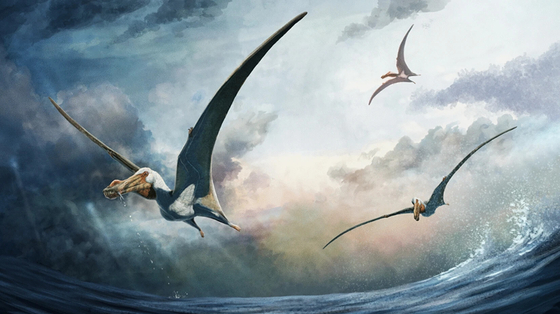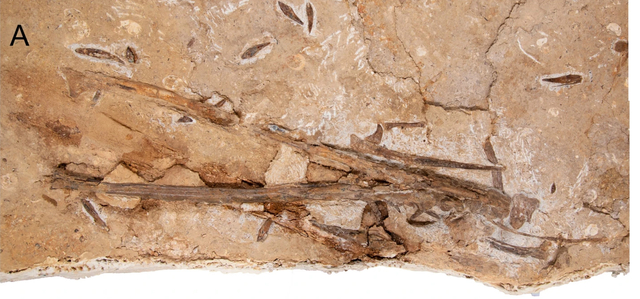[{“available”:true,”c_guid”:”4cdab571-ac56-4143-a565-acad2b687727″,”c_author”:”hvg.hu”,”category”:”itthon”,”description”:”A halálos beteg ügyvéd a Facebookon reagált a strasbourgi bíróság döntésére.”,”shortLead”:”A halálos beteg ügyvéd a Facebookon reagált a strasbourgi bíróság döntésére.”,”id”:”20240613_karsai-daniel-nagy-csalodas-az-itelet-de-megyunk-tovabb”,”image”:”https://img.hvg.hu/Img/ffdb5e3a-e632-4abc-b367-3d9b3bb5573b/4cdab571-ac56-4143-a565-acad2b687727.jpg”,”index”:0,”item”:”6e3b65d8-7878-4823-904c-997b853dc377″,”keywords”:null,”link”:”/itthon/20240613_karsai-daniel-nagy-csalodas-az-itelet-de-megyunk-tovabb”,”timestamp”:”2024. június. 13. 11:08″,”title”:”Karsai Dániel: Nagy csalódás az ítélet, de megyünk tovább”,”trackingCode”:”RELATED”,”c_isbrandchannel”:false,”c_isbrandcontent”:false,”c_isbrandstory”:false,”c_isbrandcontentorbrandstory”:false,”c_isbranded”:false,”c_ishvg360article”:false,”c_partnername”:null,”c_partnerlogo”:”00000000-0000-0000-0000-000000000000″,”c_partnertag”:null},{“available”:true,”c_guid”:”095ea579-dd69-46cc-b675-d06c7367946c”,”c_author”:”hvg.hu”,”category”:”kultura”,”description”:”A Pécsi Tudományegyetem Művészeti Kara, illetve a budapesti, Csányi János alapította Színház és Film Intézet közösen alapítanak új intézetet, ahol mintegy 50 színház és filmes szakember fog tanítani.”,”shortLead”:”A Pécsi Tudományegyetem Művészeti Kara, illetve a budapesti, Csányi János alapította Színház és Film Intézet közösen…”,”id”:”20240611_uj-szinhaz-es-filmmuveszeti-intezetet-alapitanak-pecsett-goda-krisztina-deak-kristof-is-tanithatnak-ott”,”image”:”https://img.hvg.hu/Img/ffdb5e3a-e632-4abc-b367-3d9b3bb5573b/095ea579-dd69-46cc-b675-d06c7367946c.jpg”,”index”:0,”item”:”06f1c0ab-0074-44e0-ae48-8de40c14c7c5″,”keywords”:null,”link”:”/kultura/20240611_uj-szinhaz-es-filmmuveszeti-intezetet-alapitanak-pecsett-goda-krisztina-deak-kristof-is-tanithatnak-ott”,”timestamp”:”2024. június. 11. 14:42″,”title”:”Új Színház- és Filmművészeti Intézetet alapítanak Pécsett: Goda Krisztina és Deák Kristóf is taníthatnak ott”,”trackingCode”:”RELATED”,”c_isbrandchannel”:false,”c_isbrandcontent”:false,”c_isbrandstory”:false,”c_isbrandcontentorbrandstory”:false,”c_isbranded”:false,”c_ishvg360article”:false,”c_partnername”:null,”c_partnerlogo”:”00000000-0000-0000-0000-000000000000″,”c_partnertag”:null},{“available”:true,”c_guid”:”57d4cbd8-6c49-42d8-897d-2e7df839493c”,”c_author”:”Arató László (EUrologus)”,”category”:”eurologus”,”description”:”Rendkívül súlyos ítéletet hozott az Európai Bíróság Magyarországgal szemben, kimondva, hogy olyan jogsértést követett el a magyar kormány, amely precedens nélküli.”,”shortLead”:”Rendkívül súlyos ítéletet hozott az Európai Bíróság Magyarországgal szemben, kimondva, hogy olyan jogsértést követett…”,”id”:”20240613_napi-hatmillio-forint-helyett-kozel-400-milliora-bunteti-magyarorszagot-az-europai-birosag”,”image”:”https://img.hvg.hu/Img/ffdb5e3a-e632-4abc-b367-3d9b3bb5573b/57d4cbd8-6c49-42d8-897d-2e7df839493c.jpg”,”index”:0,”item”:”1c18c0d0-9448-460e-a4da-33b731492dfd”,”keywords”:null,”link”:”/eurologus/20240613_napi-hatmillio-forint-helyett-kozel-400-milliora-bunteti-magyarorszagot-az-europai-birosag”,”timestamp”:”2024. június. 13. 10:06″,”title”:”Döntött az Európai Bíróság: Naponta egymillió eurós büntetést kell fizetnie Magyarországnak”,”trackingCode”:”RELATED”,”c_isbrandchannel”:false,”c_isbrandcontent”:false,”c_isbrandstory”:false,”c_isbrandcontentorbrandstory”:false,”c_isbranded”:false,”c_ishvg360article”:false,”c_partnername”:null,”c_partnerlogo”:”00000000-0000-0000-0000-000000000000″,”c_partnertag”:null},{“available”:true,”c_guid”:”e5ac20c2-b5e1-4716-bd44-6a0a015f5076″,”c_author”:”HVG360″,”category”:”360″,”description”:”Lassan mindennapjaink részévé válnak a kibertámadások. A legkülönösebbekről Litkai Gergely készített összeállítást. Nem is az e-krétát ért attak az igazán súlyos, ahol kiszivárgott Kovács Lacika kémiaosztályzata, hanem azok az akciók, melynek során megszerezték a Microsoft forráskódját, vagy 33 millió francia állampolgár társadalombiztosítási adataihoz jutottak hozzá. Az is kiderül, hogyan lehetne polgárháború az OTP-ben, és meghekkelhető-e Németh Szilárd gyomorgyűrűje.”,”shortLead”:”Lassan mindennapjaink részévé válnak a kibertámadások. A legkülönösebbekről Litkai Gergely készített összeállítást. Nem…”,”id”:”20240612_duma-aktual-kibertamadasok”,”image”:”https://img.hvg.hu/Img/ffdb5e3a-e632-4abc-b367-3d9b3bb5573b/e5ac20c2-b5e1-4716-bd44-6a0a015f5076.jpg”,”index”:0,”item”:”3219c411-585c-4783-9515-c137d2b007c1″,”keywords”:null,”link”:”/360/20240612_duma-aktual-kibertamadasok”,”timestamp”:”2024. június. 12. 16:00″,”title”:”Kiszivárogtak az igazgatói intők és 10 millió ausztrál banki adatai – a Duma Aktuál a legsúlyosabb kibertámadásokról”,”trackingCode”:”RELATED”,”c_isbrandchannel”:false,”c_isbrandcontent”:false,”c_isbrandstory”:false,”c_isbrandcontentorbrandstory”:false,”c_isbranded”:false,”c_ishvg360article”:true,”c_partnername”:null,”c_partnerlogo”:”00000000-0000-0000-0000-000000000000″,”c_partnertag”:null},{“available”:true,”c_guid”:”42ddccfa-5224-4e53-9c6a-afb6ce4c1b1a”,”c_author”:”Gellért Sára Mária”,”category”:”360″,”description”:”Ha holnapra eltűnne az űr, maradna a zenélés – mondja Zahorán Viktor, akinek a szakmája jóval szokatlanabb a hobbijánál. Magyarországon az elsők között végezte el az űrmérnöki mesterképzést.”,”shortLead”:”Ha holnapra eltűnne az űr, maradna a zenélés – mondja Zahorán Viktor, akinek a szakmája jóval szokatlanabb…”,”id”:”20240611_hvg-zahoran-viktor-urmernok-interju-urkutatas”,”image”:”https://img.hvg.hu/Img/ffdb5e3a-e632-4abc-b367-3d9b3bb5573b/42ddccfa-5224-4e53-9c6a-afb6ce4c1b1a.jpg”,”index”:0,”item”:”d61570d6-70e6-45a5-9adf-a1fea37485e6″,”keywords”:null,”link”:”/360/20240611_hvg-zahoran-viktor-urmernok-interju-urkutatas”,”timestamp”:”2024. június. 11. 20:00″,”title”:”„Ha biztosan túlélném, a Jupiterre mennék el” – Zahorán Viktor az űriparról, és benne a magyarok helyéről”,”trackingCode”:”RELATED”,”c_isbrandchannel”:false,”c_isbrandcontent”:false,”c_isbrandstory”:false,”c_isbrandcontentorbrandstory”:false,”c_isbranded”:false,”c_ishvg360article”:true,”c_partnername”:null,”c_partnerlogo”:”00000000-0000-0000-0000-000000000000″,”c_partnertag”:null},{“available”:true,”c_guid”:”1982ef2a-00d1-4e1d-a2f1-ee07cead6fa3″,”c_author”:”hvg.hu”,”category”:”kultura”,”description”:”A híres magándetektívnek, Benoit Blanc-nak megnőtt a haja. “,”shortLead”:”A híres magándetektívnek, Benoit Blanc-nak megnőtt a haja. “,”id”:”20240611_mar-forgatjak-a-torbe-ejtve-harmadik-reszet-daniel-craig-meglepo-frizurat-kapott”,”image”:”https://img.hvg.hu/Img/ffdb5e3a-e632-4abc-b367-3d9b3bb5573b/1982ef2a-00d1-4e1d-a2f1-ee07cead6fa3.jpg”,”index”:0,”item”:”8e0e375d-615c-4b67-9a89-5085bf8bd693″,”keywords”:null,”link”:”/kultura/20240611_mar-forgatjak-a-torbe-ejtve-harmadik-reszet-daniel-craig-meglepo-frizurat-kapott”,”timestamp”:”2024. június. 11. 16:48″,”title”:”Már forgatják a Tőrbe ejtve harmadik részét, Daniel Craig meglepő frizurát kapott”,”trackingCode”:”RELATED”,”c_isbrandchannel”:false,”c_isbrandcontent”:false,”c_isbrandstory”:false,”c_isbrandcontentorbrandstory”:false,”c_isbranded”:false,”c_ishvg360article”:false,”c_partnername”:null,”c_partnerlogo”:”00000000-0000-0000-0000-000000000000″,”c_partnertag”:null},{“available”:true,”c_guid”:”22bbceff-e9c8-4a03-8dc9-fbdfd7b16ae3″,”c_author”:”hvg.hu”,”category”:”kultura”,”description”:”A nyolcvanéves Hardy hosszú ideje rákbeteg volt. “,”shortLead”:”A nyolcvanéves Hardy hosszú ideje rákbeteg volt. “,”id”:”20240612_francoise-hardy-enekesno-meghalt-francia-pop-sanzonok”,”image”:”https://img.hvg.hu/Img/ffdb5e3a-e632-4abc-b367-3d9b3bb5573b/22bbceff-e9c8-4a03-8dc9-fbdfd7b16ae3.jpg”,”index”:0,”item”:”ee66dcd0-26c3-4bec-bcb4-f75a05496cfd”,”keywords”:null,”link”:”/kultura/20240612_francoise-hardy-enekesno-meghalt-francia-pop-sanzonok”,”timestamp”:”2024. június. 12. 08:56″,”title”:”Meghalt Françoise Hardy, a ’60-as évek zenei és divatikonja, akiért a Rolling Stones is odavolt”,”trackingCode”:”RELATED”,”c_isbrandchannel”:false,”c_isbrandcontent”:false,”c_isbrandstory”:false,”c_isbrandcontentorbrandstory”:false,”c_isbranded”:false,”c_ishvg360article”:false,”c_partnername”:null,”c_partnerlogo”:”00000000-0000-0000-0000-000000000000″,”c_partnertag”:null},{“available”:true,”c_guid”:”7a13efc1-1f95-4f6c-aaae-1e219f66d5c9″,”c_author”:”hvg.hu”,”category”:”kkv”,”description”:”A hatóság május 22-én büntette meg a céget, a határozatot valamiért viszont csak június 11-én publikálták.”,”shortLead”:”A hatóság május 22-én büntette meg a céget, a határozatot valamiért viszont csak június 11-én publikálták.”,”id”:”20240612_debrecen-szennyviz-folyadek-buntetes”,”image”:”https://img.hvg.hu/Img/ffdb5e3a-e632-4abc-b367-3d9b3bb5573b/7a13efc1-1f95-4f6c-aaae-1e219f66d5c9.jpg”,”index”:0,”item”:”4b73473c-1242-48d8-9e4c-2aae8451a807″,”keywords”:null,”link”:”/kkv/20240612_debrecen-szennyviz-folyadek-buntetes”,”timestamp”:”2024. június. 12. 11:03″,”title”:”Csak a választások után tették közzé, hogy egy debreceni gyár a csatornába folyatta a szennyvizét”,”trackingCode”:”RELATED”,”c_isbrandchannel”:false,”c_isbrandcontent”:false,”c_isbrandstory”:false,”c_isbrandcontentorbrandstory”:false,”c_isbranded”:false,”c_ishvg360article”:false,”c_partnername”:null,”c_partnerlogo”:”00000000-0000-0000-0000-000000000000″,”c_partnertag”:null}]

We recommend it from the first page

Twenty to thirty percent of promised children are not born to recipients of chocolates and baby showers.

To date, the writer and documentary director has appeared on the Al-Madani Channel program On Al-Massar.

According to the minister, if Peter Magyar's party is accepted into the People's Party, he will leave the Kurdish National Party.















































